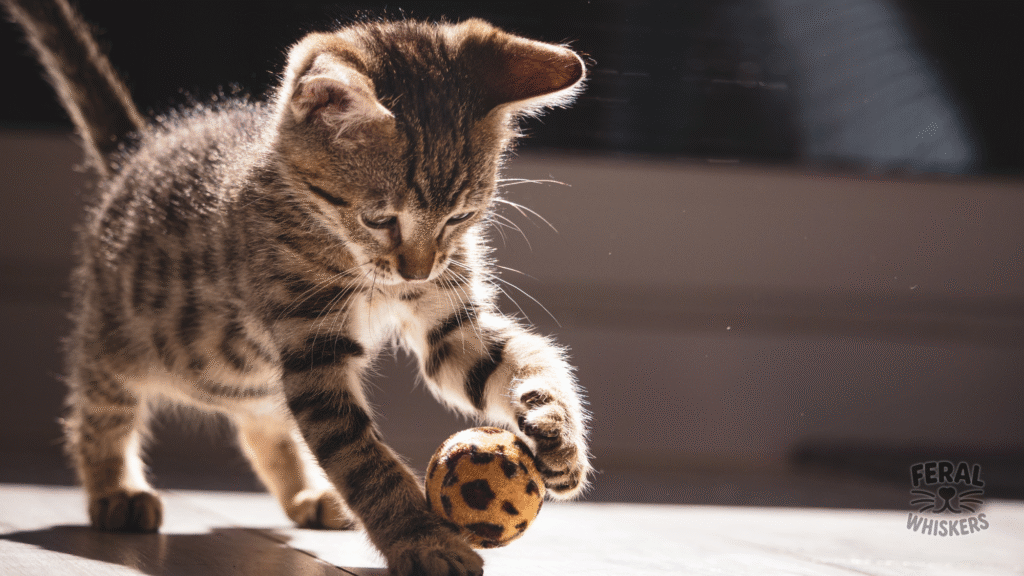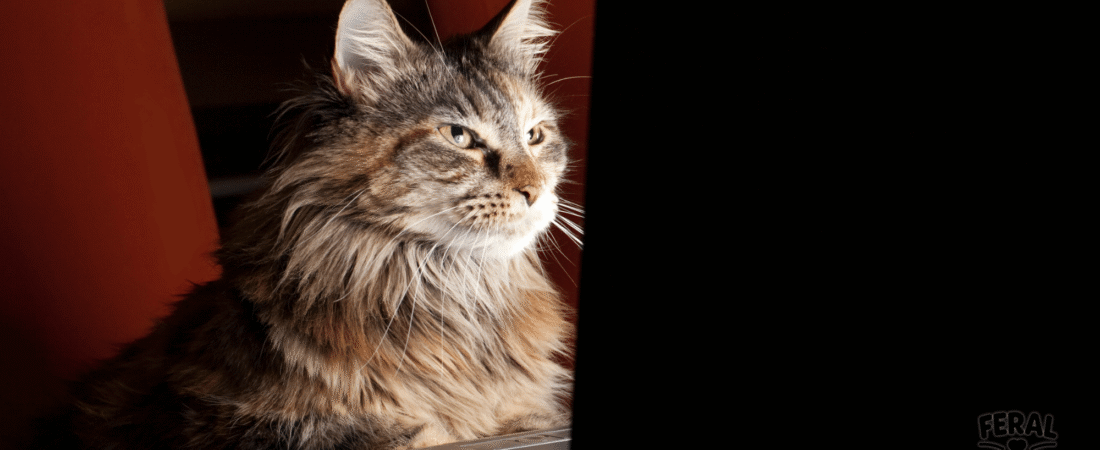📌 The Classic “Witching Hour Cat”

You’re sound asleep at 3 a.m. when suddenly: thundering paws across the hallway, random yowling, and a blur flying over your bed. Congratulations, your cat is enjoying their nightly parkour session — also known as the midnight crazies.
- Typical behaviors: Sprinting down hallways, leaping on furniture, knocking objects off shelves, wrestling shadows, and stomping across their human’s chest.
- Why it’s quirky: The timing feels deliberately evil to humans — right when we crave silence, cats are at their noisiest.
👉 But in reality, it’s biology + instinct at play.
🦠 Why Do Cats Go Wild at Night?
1. Crepuscular Instincts
- Cats are naturally crepuscular, meaning most active at dawn and dusk.
- In the wild, these times are prime for hunting — mice and small prey are most active between 2–6 a.m.
- Our cats may be domesticated, but their hunting clock remains intact.
2. Pent-Up Daytime Energy
- Indoor cats nap 12–16 hours daily, often while their humans work.
- By midnight, they’re restless and overloaded with stored energy that demands an outlet.
- That sudden loop around the living room? It’s your cat’s “calorie dump.”
3. Boredom = Chaos
- Cats with little stimulation during the day find the nighttime an excellent time to create their own entertainment.
- Translation: “If you won’t play fetch with me, I’ll body-slam the curtains.”
4. Attention-Seeking
- Some cats learn that midnight chaos wakes their humans → humans respond (feed, scold, play).
- Even negative attention reinforces the behavior.
- Basically, your cat thinks: “Yell all you want, at least you’re awake with me!”
5. Litter Box Euphoria
- Cats are infamous for “post-poop zoomies” — sometimes intensifying their middle-of-the-night theatrics. You go potty, then… celebrate with a hallway sprint parade.
🚨 When the Night Madness Isn’t Normal
- Sudden new behavior: If an older cat develops nightly zoomies suddenly, it could signal hyperthyroidism or cognitive decline.
- Excessive yowling: Loud, distressed meowing may point to pain, stress, or disorientation.
- Constant 3 a.m. destruction: Occasional chaos is normal; daily, extreme disturbances may mean your cat needs more structured stimulation.
🌿 Holistic & Practical Solutions
You can’t change their instincts — but you can manage them:
- Pre-Bed Play Sessions
- Tire them out with 20 mins of intense hunting play (wand toy, laser, feather chase).
- Always end with a “catch” and a treat, mimicking a natural hunt → eat → sleep cycle.
- Scheduled Evening Feeding
- Feed a meal right before YOUR bedtime.
- Cats often sleep soundly after eating, extending your quiet hours.
- Nighttime Enrichment
- Leave interactive toys, puzzle feeders, or treat balls for self-entertainment.
- Cat trees and window perches give them safe climbing options instead of your dresser.
- Ignore the “Bed Olympics”
- Reacting (shooing, yelling, even cuddling) trains them that waking you = fun.
- Hard as it is, no attention at all works best over time.
- Holistic Calming Aids
- Try Feliway diffusers, calming collars, or valerian/catnip toys to mellow late-night energy.
- Herbs like chamomile (safe, in tiny cat-approved forms) may help some stressed cats.
❓ FAQs
Q1: Will my cat ever grow out of this?
Kittens and young cats tend to outgrow daily midnight crazies. Older cats mellow out, but zoomies never fully disappear.
Q2: Can I train my cat not to wake me at night?
You can shape behavior — daily play, late meals, and ignoring attention-seeking all help — but you can’t override instincts entirely.
Q3: Why does my cat attack my toes in bed at night?
Movement under blankets mimics prey. In their mind, your toes are mice. Sorry.
Q4: My cats team up at 3 a.m. Is that normal?
Yes! Multi-cat households often experience full-on stampede races. It’s both social bonding and enrichment.
💡 Final Thoughts
The “midnight stampede” isn’t cruel intention — it’s a cat tapping into its biological hunting rhythm, pent-up energy, and curiosity.
✅ Key takeaway: With more daily stimulation, a bedtime play–eat–sleep routine, and strategically placed toys, you can minimize 3 a.m. feline chaos. You may not stop it completely… but you might reclaim some sleep.

